Papers by Leila Honari
Histories of cinema as an artform tend to start in the early nineteenth century and consider cine... more Histories of cinema as an artform tend to start in the early nineteenth century and consider cinema as the convergence of two different practices that developed in parallel, only coming together at the end of the century. The first is the capture of still photoreal images in a chemical medium, known as photography. The second is the exploration of making graphic images appear to move, encapsulated in a series of amusement devices, which became known as philosophical or optical toys (Wyver, 1989 and Nowell-Smith, 1997). The Daguerrotype and Niepce images (see Figures 1 and 2) depict the way that the formative history of cinema is usually portrayed. However, I argue that concepts of storytelling through the moving image can be seen in art much earlier than the late nineteenth century.
Histories of cinema as an artform tend to start in the early nineteenth century and consider cine... more Histories of cinema as an artform tend to start in the early nineteenth century and consider cinema as the convergence of two different practices that developed in parallel, only coming together at the end of the century. The first is the capture of still photoreal images in a chemical medium, known as photography. The second is the exploration of making graphic images appear to move, encapsulated in a series of amusement devices, which became known as philosophical or optical toys (Wyver, 1989 and Nowell-Smith, 1997). The Daguerrotype and Niepce images (see Figures 1 and 2) depict the way that the formative history of cinema is usually portrayed. However, I argue that concepts of storytelling through the moving image can be seen in art much earlier than the late nineteenth century.

This research will explore the mandala structure in Persian mystical stories and traditional arts... more This research will explore the mandala structure in Persian mystical stories and traditional arts and aims to show how Persian mystical stories have a mandala structure in their formation and the Persian art tradition reflects the circle and centre of the universe as a mandala. The word Mandala derives from Sanskrit and represents a way to reach the centre or reach enlightenment. It is a design that symbolizes the cosmic structure and consciousness. A mandala is a mortal imagination of spirituality or immortality and based on its essence associated with sacred art, it can be found in the structure of religious and traditional arts of many different cultures. In all of them the purpose is to strive towards perfection and self- discovery. This magical design is a formula or template of creation, mysticism, myths, epics and even the universe. This research unveils conceptual and pictorial evidence of mandala patterns in traditional Persian arts and Sufi stories. To date, there has not ...

CreateWorld 2015, A Digital Arts Conference, AUC, 2015
Animation’s linear narrative paradigm screened on rectangular flat surfaces remains paramount in ... more Animation’s linear narrative paradigm screened on rectangular flat surfaces remains paramount in mainstream commercial viewing modes, however the affordances of current technology present alternate opportunities for engaging with animated content.
Viewing works displayed on non-flat surfaces in large-scale environments is becoming commonplace. While many works include elements of narrative, or aspects of visual playfulness and optical whimsy, they do not manage to combine both of these facets into a singular immersive visually engaging
storytelling experience.
This paper discusses the development of a 360-degree projection installation in a cylindrical space of looped figurative and pattern-based animation sequences that narrate elements of a short story based on Attar’s The Conference of The Birds.
Referencing optical toys like the zoetrope and praxinoscope from an early pre-cinema era, the artists’ challenge is to develop a methodology that combines the technical and aesthetic qualities of simple looping animation sequences that
both intertwine and interplay in a visual and narrative way, in a seamless immersive gallery style environment.
The investigation looks at the physical science of projection, including the technical specifications, timings and layering required to create a continuous image. It also poses questions of audience engagement and appeal beyond the novelty
factor, analyzing a number of recent works in this genre. What are the requisite elements of narrative, visual perspective,
timing and pacing and levels of detail for an effective multi projection work? Some answers include a requirement
for technical seamlessness, clarity in colour depth, repetition and simultaneity and the presence of narrative artifacts.
Animation Studies Online Journal , 2018
The archaeology of Persia may be a significant element of the jigsaw of understanding the anteced... more The archaeology of Persia may be a significant element of the jigsaw of understanding the antecedents of film and moving image – in particular animation. In this paper the roots of the cinematic moving image have been analyzed in tandem with historical artifacts from Persia to consider the possible influence of Persian art and science on the nineteenth century inventors of optical toys that were a crucial step on the developmental path of animation and cinema more generally.
Conference Presentations by Leila Honari
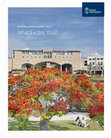
ASPERA Conference 2017, What Excites You?, 2017
Research methodologies for visual artists are somewhat limited to a combination of practice-based... more Research methodologies for visual artists are somewhat limited to a combination of practice-based or practice-led research, action research, case studies, comparative or critical analyses and auto-ethnographic activities. The relationship of these methodologies to contemporary, innovative screen media based research projects are poorly articulated, particularly for enquiries that traverse and integrate multiple forms.
This paper proposes a novel research model for artists; The ‘Rubik’s Cube’ structure, which has developed from Joy Paul Guildford’s theory that the ‘structure of the intellect’ is a cubic matrix comprised of Contents, Products and Operations (methods of processing information, fundamentals of classification, and general intellectual processes).
Drawing on psychology research into the ways artists think and the creative process which links a ‘preference for intuitive operation (finding meanings and hidden patterns) rather than sensation orientation (facts over ideas)’, the proposal focuses on how to draw correlations and synthesize seemingly disparate facets of a creative arts practice-based research enquiry.
Incorporating a relationship to Edward de Bono’s ‘Six Hats’ thinking systems which considers approaching a question from various viewpoints, and the concept of a ‘spirograph’, which creates a pattern by connecting up various points within a contained system, the ‘Cube’ system also works within a contained mathematical form with every shift operating around a central core.
Symbolically, the Rubik’s cube is an allegory for this kind of thinking system with each twist or shift in the face creating new combinations, with the opportunity for both answering and proposing new questions. The analogy continues, in the way creative research puzzles are often not ‘solved’ until the final twist.


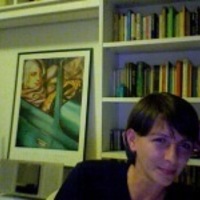



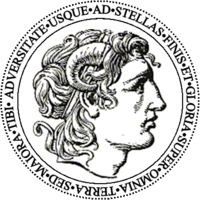
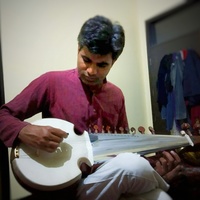

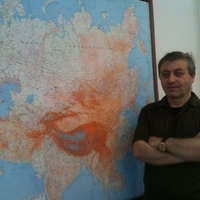
Uploads
Papers by Leila Honari
Viewing works displayed on non-flat surfaces in large-scale environments is becoming commonplace. While many works include elements of narrative, or aspects of visual playfulness and optical whimsy, they do not manage to combine both of these facets into a singular immersive visually engaging
storytelling experience.
This paper discusses the development of a 360-degree projection installation in a cylindrical space of looped figurative and pattern-based animation sequences that narrate elements of a short story based on Attar’s The Conference of The Birds.
Referencing optical toys like the zoetrope and praxinoscope from an early pre-cinema era, the artists’ challenge is to develop a methodology that combines the technical and aesthetic qualities of simple looping animation sequences that
both intertwine and interplay in a visual and narrative way, in a seamless immersive gallery style environment.
The investigation looks at the physical science of projection, including the technical specifications, timings and layering required to create a continuous image. It also poses questions of audience engagement and appeal beyond the novelty
factor, analyzing a number of recent works in this genre. What are the requisite elements of narrative, visual perspective,
timing and pacing and levels of detail for an effective multi projection work? Some answers include a requirement
for technical seamlessness, clarity in colour depth, repetition and simultaneity and the presence of narrative artifacts.
Conference Presentations by Leila Honari
This paper proposes a novel research model for artists; The ‘Rubik’s Cube’ structure, which has developed from Joy Paul Guildford’s theory that the ‘structure of the intellect’ is a cubic matrix comprised of Contents, Products and Operations (methods of processing information, fundamentals of classification, and general intellectual processes).
Drawing on psychology research into the ways artists think and the creative process which links a ‘preference for intuitive operation (finding meanings and hidden patterns) rather than sensation orientation (facts over ideas)’, the proposal focuses on how to draw correlations and synthesize seemingly disparate facets of a creative arts practice-based research enquiry.
Incorporating a relationship to Edward de Bono’s ‘Six Hats’ thinking systems which considers approaching a question from various viewpoints, and the concept of a ‘spirograph’, which creates a pattern by connecting up various points within a contained system, the ‘Cube’ system also works within a contained mathematical form with every shift operating around a central core.
Symbolically, the Rubik’s cube is an allegory for this kind of thinking system with each twist or shift in the face creating new combinations, with the opportunity for both answering and proposing new questions. The analogy continues, in the way creative research puzzles are often not ‘solved’ until the final twist.
Viewing works displayed on non-flat surfaces in large-scale environments is becoming commonplace. While many works include elements of narrative, or aspects of visual playfulness and optical whimsy, they do not manage to combine both of these facets into a singular immersive visually engaging
storytelling experience.
This paper discusses the development of a 360-degree projection installation in a cylindrical space of looped figurative and pattern-based animation sequences that narrate elements of a short story based on Attar’s The Conference of The Birds.
Referencing optical toys like the zoetrope and praxinoscope from an early pre-cinema era, the artists’ challenge is to develop a methodology that combines the technical and aesthetic qualities of simple looping animation sequences that
both intertwine and interplay in a visual and narrative way, in a seamless immersive gallery style environment.
The investigation looks at the physical science of projection, including the technical specifications, timings and layering required to create a continuous image. It also poses questions of audience engagement and appeal beyond the novelty
factor, analyzing a number of recent works in this genre. What are the requisite elements of narrative, visual perspective,
timing and pacing and levels of detail for an effective multi projection work? Some answers include a requirement
for technical seamlessness, clarity in colour depth, repetition and simultaneity and the presence of narrative artifacts.
This paper proposes a novel research model for artists; The ‘Rubik’s Cube’ structure, which has developed from Joy Paul Guildford’s theory that the ‘structure of the intellect’ is a cubic matrix comprised of Contents, Products and Operations (methods of processing information, fundamentals of classification, and general intellectual processes).
Drawing on psychology research into the ways artists think and the creative process which links a ‘preference for intuitive operation (finding meanings and hidden patterns) rather than sensation orientation (facts over ideas)’, the proposal focuses on how to draw correlations and synthesize seemingly disparate facets of a creative arts practice-based research enquiry.
Incorporating a relationship to Edward de Bono’s ‘Six Hats’ thinking systems which considers approaching a question from various viewpoints, and the concept of a ‘spirograph’, which creates a pattern by connecting up various points within a contained system, the ‘Cube’ system also works within a contained mathematical form with every shift operating around a central core.
Symbolically, the Rubik’s cube is an allegory for this kind of thinking system with each twist or shift in the face creating new combinations, with the opportunity for both answering and proposing new questions. The analogy continues, in the way creative research puzzles are often not ‘solved’ until the final twist.